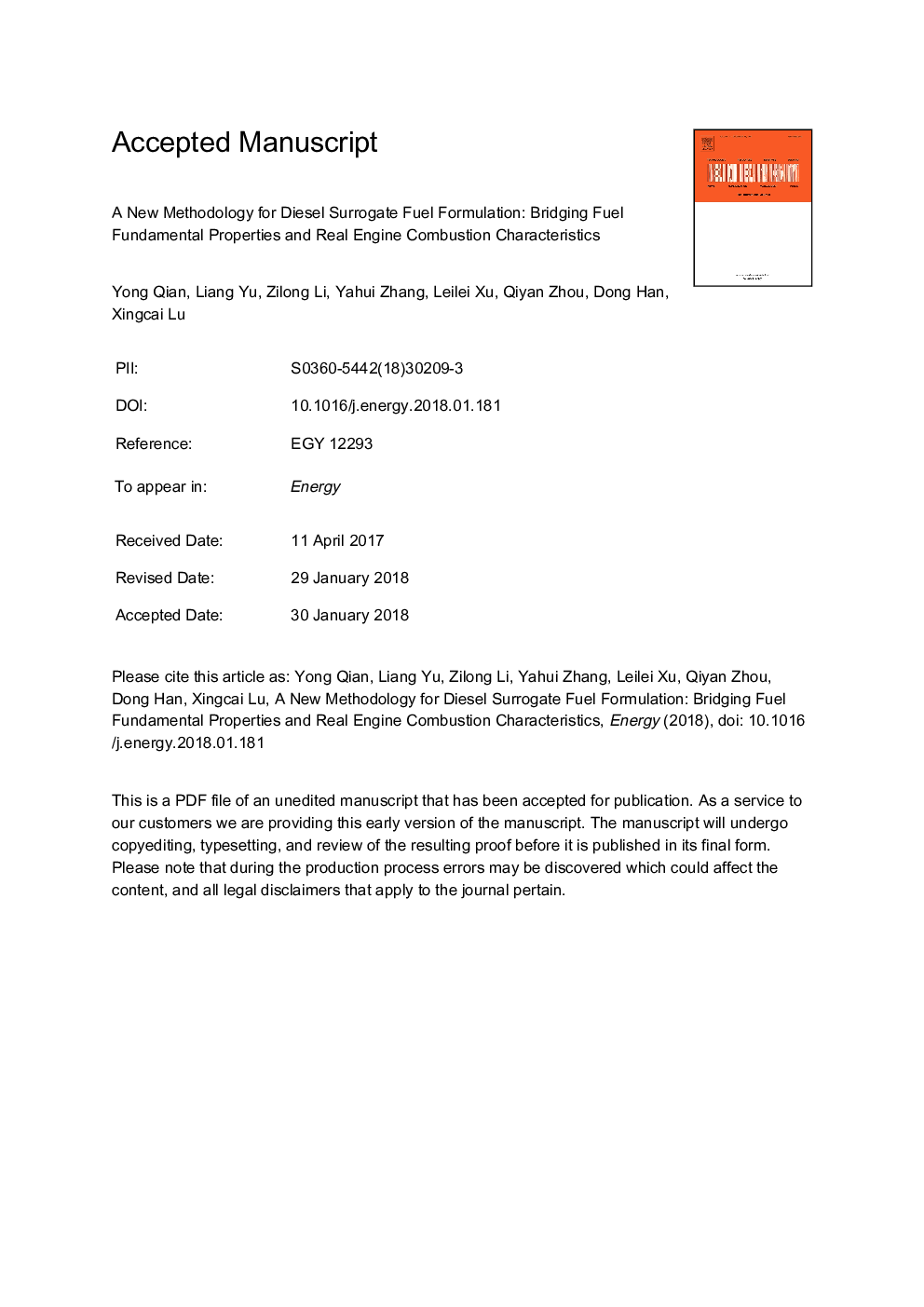| کد مقاله | کد نشریه | سال انتشار | مقاله انگلیسی | نسخه تمام متن |
|---|---|---|---|---|
| 8072012 | 1521402 | 2018 | 68 صفحه PDF | دانلود رایگان |
عنوان انگلیسی مقاله ISI
A new methodology for diesel surrogate fuel formulation: Bridging fuel fundamental properties and real engine combustion characteristics
ترجمه فارسی عنوان
یک روش جدید برای فرمول سوخت دیزل جایگزین: ویژگی های بنیادی سوخت و خصوصیات احتراق موتور واقعی
دانلود مقاله + سفارش ترجمه
دانلود مقاله ISI انگلیسی
رایگان برای ایرانیان
کلمات کلیدی
جایگزین دیزل، احتراق انتشارات، دیزل مشترک راه آهن، تعامل سوخت و موتور،
موضوعات مرتبط
مهندسی و علوم پایه
مهندسی انرژی
انرژی (عمومی)
چکیده انگلیسی
Given the complexity and uncertainty of diesel compositions, it is of great challenges to study the fundamental combustion processes and mechanism of diesel fuel, in particular the gaseous and particulate pollutant formation mechanisms. A reasonably designed diesel surrogate is proved to be an effective way to study the fundamental combustion mechanism of diesel fuel. However, most existing diesel surrogates mainly adopt light hydrocarbon components, increasing the difficulty of accurately reflecting the physical and chemical properties of practical diesel fuel or the combustion and emissions characteristics of diesel engines. Therefore, in this study, a methodology to construct diesel surrogates with C10â¯â¼â¯C18 hydrocarbon components based on fuel properties and engine combustion and emissions characteristics was proposed. First, the key physical and chemical fuel properties that affect fuel injection, atomization, ignition, combustion, engine efficiency and emissions were discussed in detail. Second, 13 candidate components were chosen to represent n-alkanes, iso-alkanes, cycloparaffins and aromatics and blended with commercial diesel fuel in different proportions. Fuel injection, spray, ignition and combustion phase, engine efficiency and emissions versus changed blending component and proportion were systematically investigated. In particular, the effects of the cetane number and fuel volatility on combustion and emissions were investigated under fixed injection timing and fixed ignition timing conditions, respectively. Afterward, the key physical and chemical parameters of the surrogate fuels were defined, and the constraint equations were constructed for different parameters. Considered the uncertainties in the components and physicochemical properties of the actual diesel fuel, it is believed that the construction of surrogate fuel has only reasonable solutions and there is no optimal solution. Finally, three diesel surrogates were proposed from the feasible domains of constraint equations, including a 3-Components surrogate (41.3% n-hexadecane, 36.8% 2,2,4,4,6,8,8-heptamethylnonane (HMN), 21.9% 1-methylnaphthalene, by mol.), a 5-Components surrogate (21.6% n-hexadecane, 15.5% n-octadecane, 26.0% HMN, 20.7% 1-methylnaphthalene, 16.2% decalin, by mol.) and a 7-Components surrogate (21.5% n-hexadecane, 15.4% n-octadecane, 25.8% HMN, 13.7% 1-methylnaphthalene, 8.1% decalin, 8.1% n-butylbenzene, 7.4% n-butylcyclohexane, by mol.). It is found that the surrogates proposed in this study can accurately reproduce actual engine combustion characteristics. Also, the gaseous emissions of the 5-Components surrogate are closest to those of the target diesel fuel in the tested engine operation conditions.
ناشر
Database: Elsevier - ScienceDirect (ساینس دایرکت)
Journal: Energy - Volume 148, 1 April 2018, Pages 424-447
Journal: Energy - Volume 148, 1 April 2018, Pages 424-447
نویسندگان
Yong Qian, Liang Yu, Zilong Li, Yahui Zhang, Leilei Xu, Qiyan Zhou, Dong Han, Xingcai Lu,
